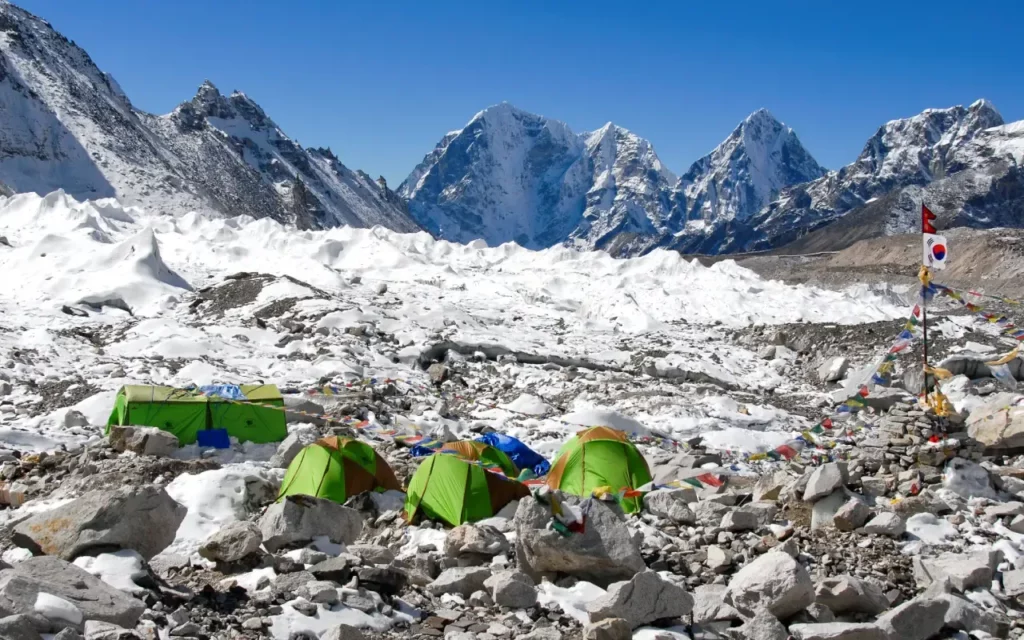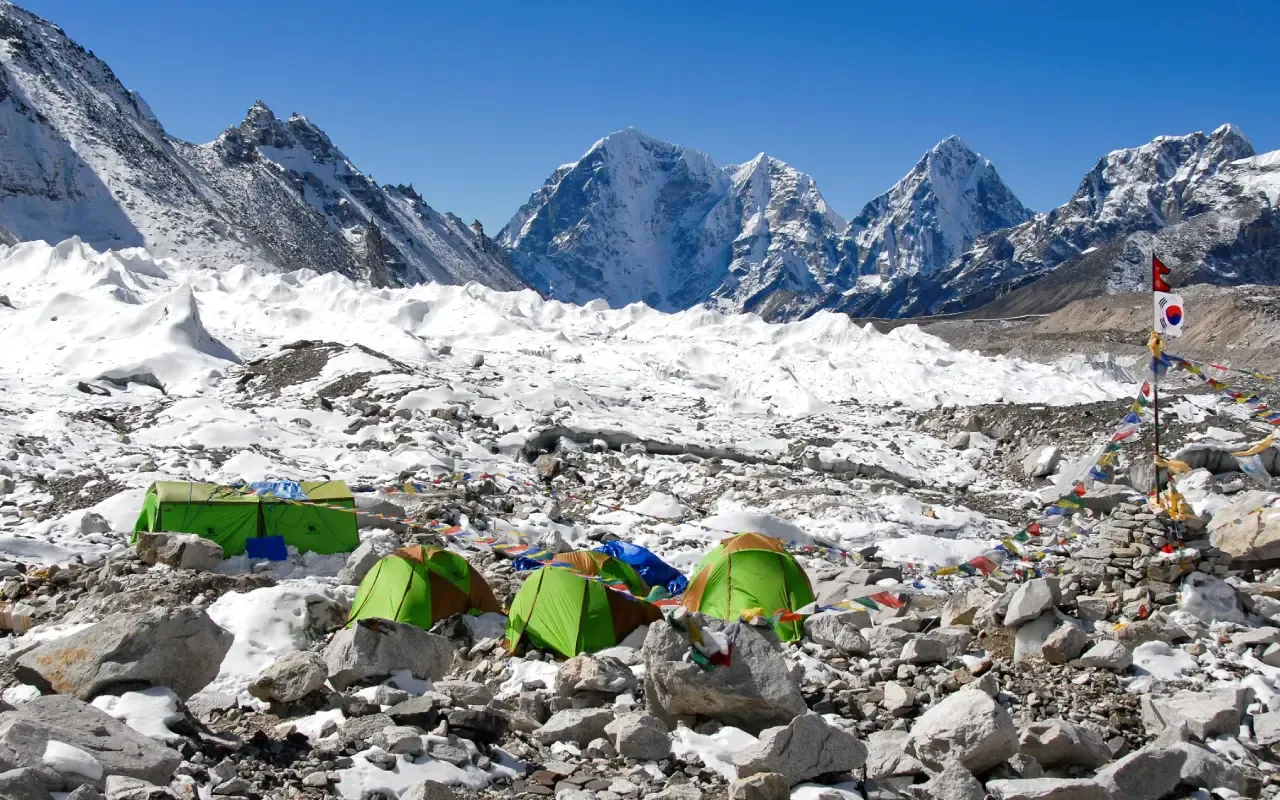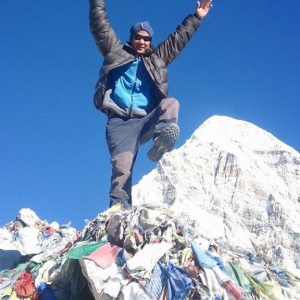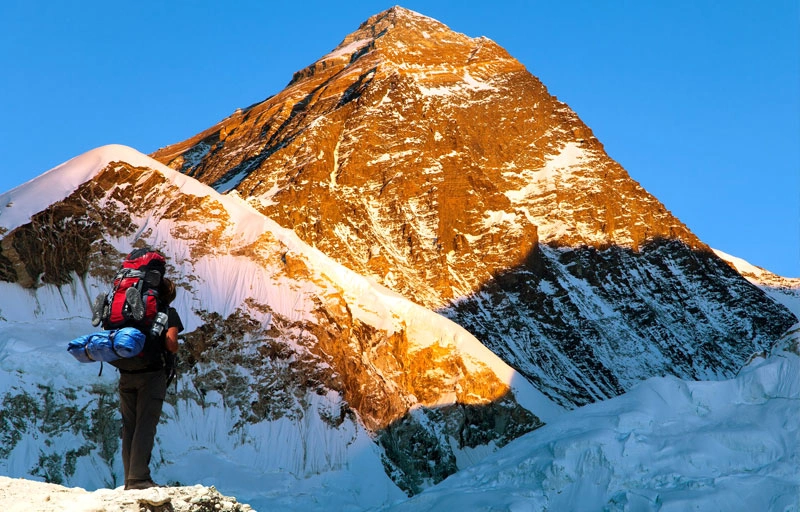Rainbow Valley Everest: The Dark Truth Behind the Mountain’s Most Haunting Name
Table of Contents
Introduction
Everest (8,849 meters) is considered the ultimate icon of human strength and desire. Explorers all around the world are longing to reach the top of the Everest.
To most people, the peak is a symbol of victory, revolution, and an indelible experience of the primal strength of nature. However, all the spectacular sunrises and moving clouds are disguising the hazards that have made the Everest what it is today in the entire history of mountaineering.
Rainbow Valley is not a myth; it’s a nickname used by climbers, not an official geographic name. Although the name is beautiful, it has a dark myth behind it. Bodies are visible along the Northeast Ridge.
Everest is known to have a shadowy secret behind its magnificent beauty at an altitude that goes beyond the clouds. Rainbow Valley is not about the glory of color, but rather a horrible gutcheck of danger, human frailty, and the implacable power of nature always.

What Is Rainbow Valley on Mount Everest?
Rainbow Valley Everest is a term used to describe a chilling area just under the summit, towards the Northeast Ridge, approximately 8000 meters. It is located in the so-called death zone, where the level of oxygen is extremely low; thus, it becomes extremely hard to survive.
Although Rainbow Valley is a peaceful name, it’s not a scenic and lush valley. Rather, it is a steep, icy slope below the summit ridge (Northeast Ridge), when a weary climber tends to collapse, he is frozen in the drastic landscape forever.
The name is given after the bright jackets, climbing suits, boots, ropes, and other equipment used by fallen mountaineers. Over time, these bodies are exposed to wind and snow, producing a strange rainbow-like effect on the mountainside that is already hostile.
The visual opposition is unreal and aching. There are brilliant reds, blues, oranges, and greens which contrast sharply with the white snow of the same color infinity and grey rock, reminding the climbers of the strength of human perseverance as well as the harsh price of trying to climb Everest.
Rainbow Valley is a gloomy place, though it rhymes beautifully. It is used to represent the harsh reality of the mountain where rescue above 8,000m is extremely rare. Those who pass through the climbers have a physical burden and an emotional weight of witnessing the ultimate danger in mountaineering.
The Origin of the Name: Why “Rainbow Valley”?
Rainbow Valley Everest was named informally by climbers/online community who saw the disturbing beauty of the mountain. They watched yellow jackets, color suits, helmets, and equipment stuck in the ice, and in patches flashed color across the cold, deadly slope.
Lack of oxygen and harsh winds make several climbers weaken around this stage. The fallen are usually left in the place where they collapse. The deep cold of nature preserves them, and their colorful equipment can even be seen several years afterward.
These colors form a haunting mosaic over the years and years with reds, blues, yellows, and greens on contrasting snow and rock. These colors are bright, the lives of people, all of those who were climbers who did not get back home.
The low humidity and extreme temperatures at this altitude ensure that bodies remain intact for several decades. Clothing does not fade quickly, frost locks everything into place, and snow rarely melts, sealing stories beneath layers of ice.
Rainbow Valley leaves a mixed feeling on the mountaineers who pass by. Fear of the mountain’s strength is intertwined with grief over the missing climbers. It is a silent reminder of the ambition, danger, and the slender line between success and demise.
Every color in Rainbow Valley has a story behind it: dreams being pursued, sacrifices being made, courage being tested, and life lost. The word itself is beautiful, yet to those who have seen it, it is a sign of respect, humility, and the harsh truth of the unforgiving nature of Everest.
The Death Zone: What Happens Above 8,000 Meters
The Death Zone in Mount Everest is anything that is over 8000 meters, beyond which there is an exceptionally low oxygen and air pressure. The human body cannot afford to be in this hostile environment for long.
The temperature here may even drop to -40 degrees Celsius, and the fierce winds blow across open ridges. Even well-trained climbers with supplemental oxygen find it challenging because breathing feels thin and movement is painstakingly slow and tiresome.
Within the Death Zone, hypoxia impairs cerebral functions, leading to confusion, poor judgment, hallucination, and poor coordination. Bodies deteriorate quickly, frostbite attacks the limbs, which can lead to life-threatening conditions as pulmonary or cerebral edema can occur in a short period of time.
These are drastic stresses that tend to make life and death choices. Climbers can take off gloves, sit down to have a rest, forget the safety rope, or lose the desire to go on. Fatigue and coldness are the two factors that complement each other; hence, even the most basic chores seem impossible and hazardous.
Rainbow Valley Everest is in this inhospitable area, which makes rescuing almost impossible. Surviving is all about speed and strength. Lots of climbers die here; their bodies are left here to remind people of the deadly and ruthless altitude of Everest.
Why Are There So Many Bodies on Mount Everest?
The extreme altitude of Mount Everest makes body recovery very dangerous and costly. Oxygen, manpower, ropes, sand, and special teams are needed, and rescue or retrieval may cost between seventy thousand and one hundred thousand dollars, or more.
It is a struggle at every step above 8,000 meters. Climbers are already struggling to survive, and it is scarcely possible to help or bring someone with them. The harsh conditions of the mountain do not give much rescuing power.
Tremendous inclines, unstable ice, concealed crevasses, and rockfall create grave danger. Sherpa rescuers are exposed to life-threatening risks when they have to go through narrow ridges, deep snow, and a short supply of oxygen, and safe retrieval missions are very infrequent and intricate.
Due to these risks, a great number of climbers who die do so when they are still falling. Several bodies have become identified landmarks over the decades, and future mountaineers take the route to the top using the same structures unwillingly.
Noted ones are Green Boots, a climber who was identified by fluorescent green shoes, and Sleeping Beauty, who was remembered by her peaceful sleeping position. These sad signs make those who come to adventure better aware of the forgiveness of the mountain and the excessive price.
Climbers who come across bodies experience emotional and moral struggles. Others are murmuring prayers or offering things; others glance away. The mountain imposes a harsh reality – survival can be a far more powerful thing than being able to assist someone.
Stories of Famous Climbers in Rainbow Valley
Green Boots, who is thought to be Tshewang Paljor, an Indian climber on the Mount Everest expedition in 1996, is one of the best-known people who have been linked with Rainbow Valley Everest. His green boots shone brightly, thus making it a landmark among the climbers who passed through the route.
Paljor and his teammates were caught in the severity of the weather close to the summit, and they never came back. Climbers pass by the small cave where he slept over the years, an awful reminder of danger and devotion frozen in silence.
There is another heartrending tale of Francys Arsentiev, known as Sleeping Beauty. Francys Arsentiev died below the summit near 8,300m, not exactly in the Rainbow Valley. She was the first American woman to arrive at Everest peak without any supplemental oxygen in 1998, though in the process, she had trouble returning and got caught up.
Her husband, Sergei Arsentiev, tried to save her but ended up dying in an attempt. He was later discovered by climbers on the mountain. This depicts a lot of love, sacrifice, and the unimaginable emotional burden that Everest may inflict on families.
There are numerous other climbers who are still in Rainbow Valley, but not as well-known. They were ardent explorers, mentors, and visionary people pursuing a once-in-a-lifetime dream. Climbers are reminded of the courage and the spirit of humanity that lies behind every attempt by their presence.
Survivors tend to be silent about such instances. One climber once said, “Everybody I pass whispers a warning. These narrations are courageous, tragic, and have an enduring nature of the mountain.

The Psychological Impact on Climbers
Climbers who go through Rainbow Valley Everest usually give an emotional shock story. The sight of frozen bodies along the way to the top makes them know that death here is a reality, it is something nearby, and it can strike anytime and leave them in fear and silence.
Most mountaineers testify to conflicting feelings: sadness, respect, guilt, helplessness. Others are murmuring prayers or bowing. Some go numb due to recurring exposure, and as a survival strategy at high altitude, they employ emotional detachment.
Victims have been quoted as saying that they are reminded of it many years after they go home. Climbers will have nightmares, flashbacks, or silent guilt of wondering whether they could have done something when the situations prevented it, and it was incredibly dangerous.
One of the strong forces in this mental struggle is the summit fever. When this comes to exhaustion and thin oxygen, determination may become obsession. Others move forward regardless of the fearful trends, and the dreams of the summit are included in their priorities rather than safety and common sense.
This brings a bitter ethical conflict. Climbers can find someone in distress whom they must decide whether to stop and assist or to go on surviving themselves. On Everest, man and heroism clash with one another in a brutal, kill-or-be-killed intervention that none will ever forget.
Efforts to Clean Up Everest and Recover Bodies
In recent years, both Nepal and China initiated their collective attempts to clean Mount Everest and recover human bodies where feasible. Officially sponsored groups and expert Sherpas make trips within good weather conditions, and consideration must be made for safety and success.
Organizations as the Sagarmatha Pollution Control Committee and the Everest Cleaning Campaign have been instrumental. They pick up trash, take away the old equipment, and pay tribute to climbers by cleaning their resting areas with respect in cases where recovery is feasible.
Some ambitious projects have cleared tons of trash, oxygen cylinders, tents, and even remains. These missions show increased respect towards the environment and the individual who took this extreme adventure and never came back.
Nevertheless, the recovery efforts are still risky and minimal. Most families finance their own retrieval operations, although others prefer to leave their loved ones to sleep on Everest since the mountain was their dream and last home.
As the climbing seasons increase, the awareness and responsibility increase. Climbers and organizations are becoming more and more aware of the fact that Everest needs to be preserved and respected, not only as a world icon, but as a sacred landscape that is formed by courage, defeat, and hope.
Ethical Debate: Should the Bodies Be Removed?
There is an emotional debate of whether bodies should be removed in Rainbow Valley, Everest, or not. It is also said that climbers have a right to die with dignity, and those who perish would have their remains back home so the families would grieve appropriately.
Advocates of removal also reason that environmental causes. They feel retrieval of bodies would save the purity of the Everest, and the mountain will not turn out to be a permanent cemetery that will be seen by the generations to come.
Nevertheless, most of them are against it because of the great risk. Recovery operations in the Death Zone would be extremely risky to the Sherpas and the climbers, and no life can be put at stake to recover bodies.
Some consider the lying climbers as a part of Everest history – natural shrines of heroism and adventure. Certain families show their desire not to take their loved ones away and leave them in the place they fell, as it is a sign of respecting personal dreams and last moments.
In the mountain community, there has been a divided opinion. Rainbow Valley can be viewed as a somber reminder of the power and expense of Everest by many. It was the beauty and danger of the mountain, and it will be the same, regardless of whether it is damaged or not in the future.
The Symbolism of Rainbow Valley
Rainbow Valley Everest is a strong image of human desire and weakness. It symbolizes the amazing boldness needed to pursue the greatest dreams of the world and the helplessness to take any step into the world of extremes.
The bright attires lying around the frozen slope make up a rainbow of death – a reminder that life is bright, bold, and full of hope. But here those colors stand motionless, and are an imprint of dreams that went to their last horizon.
Rainbow Valley places beauty and death next to each other. The bright colors oppose silent snow, and this is the way success and failure usually go hand in hand when human beings push their boundaries to the extreme.
This location speaks of the lessons of nature’s superiority and the price of excess. Everest is a reward the determination, but it requires high respect. The mountain is a reminder that passion may result in greatness or mild submission.
After all, Rainbow Valley echoes the spirit of human beings, brave, delicate, and immortal. Its frozen colors are of lives that were lived and not without a dream, a dream that is worth going, even to the silent depth of the unknown.
Safety Improvements and Modern Mountaineering Ethics
The contemporary Everest mountaineering has developed to great heights. Sophisticated equipment, satellite radio, and precise weather prediction have raised the chances of survival to enable climbers to schedule safer up-summit attacks and evade unexpected storms.
Helicopters cannot operate safely at the summit area; thus, medical training among guides has also increased (IFMGA-certified guides). Although no one can reach the Death Zone, emergency interventions are even more efficient than they were decades ago.
Oxygen policies are enforced by all teams, but it is not mandatory by law for all expeditions. Nowadays, climbers have more favorable acclimatization programs and hydration strategies to minimize the dangers of altitude.
Ethical standards have even increased. The expeditions have shifted to focusing on teamwork, sound judgments, and the safety of the Sherpas. Guiding companies have stricter guidelines that safeguard the clients as well as the high-altitude workers.
Nevertheless, Everest is not safe, and it is a matter of perception, stamina, and weather. Technology, human error, fatigue, and the power of nature remain as challenges to the most experienced climbers.
Rainbow Valley Everest still stands as a stern tribute to the unemotional nature of the mountain. Regardless of advances, every climber who passes leaves respect behind them for those who went before them and the lessons inscribed in ice color.
Conclusion
Rainbow Valley Everest mainly represents one of the mountain’s greatest truths – its beauty does not erase the tragic loss of life. The colorful bags and bodies frozen in time are not monuments to the joy of life, but rather a silent tribute to the bravery, dreams, and lives offered in the pursuit of excellence.
Everest is both adventure and peril. It inspires thousands through its magnificence; it humbles the hearts of every person who dares to stand before it. It kneels both glory and suffering without fuss, while forgetting, considering that nature’s purpose for the highest mountains is humility, strength, reverence, and sacrifice nestled inside your heart.
In factual terms, Rainbow Valley survives beyond a place. Rainbow Valley is the human spirit, our Courage, our Motivation, and the Risk of Greatness.




